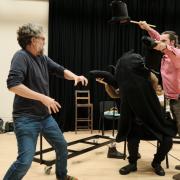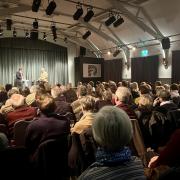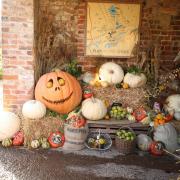‘You may think that returning native butterfles into the countryside is bound to assist nature, but in fact, unless rules are followed one can easily do more harm than good’
Any reader with an interest in the countryside, however peripheral, must be aware that the majority of butterflies native to this country are in severe decline – as too are many of once common moths – and while there are still patches of countryside, usually managed for a particular species, which offer some tentative hope for the future, the fact remains that butterflies, those insects which bring life and colour to our countryside, once so common as scarcely to be noticed, are now in peril of extinction.
Certainly last year was, in my part of the West Country, a disaster where butterflies were concerned. I failed to see a single brimstone, that yellow (in the male) harbinger of spring, and only one or two orange-tips. A pretty little butterfly, the male, with its orange wing-tips, spends a springtime day wandering the countryside in search of a black wing¬tipped female. Once so common, they too, seem to be in short supply.
Saddest of all, though, has been the steep decline in tortoiseshells, red admirals and peacocks. I have several substantial buddleias in the garden, grown specifically for butterflies, but where in former years I have in August counted as many as 40 plus insects on the purple flowers, of perhaps five or six species, last year scarcely any visited this source of nectar.
For many years I was absorbed by both butterflies and moths and, I confess, collected a wide range of specimens, notably in Sussex and Surrey. Today, they are cased in cabinet drawers in my office, but my collecting equipment now gathers dust and, instead, I prefer to breed these insects, from eggs, larvae or pupae.
However, while breeding butterflies can be of great interest and value, any intention to release native butterflies into the wild can be fraught with problems. You may think that returning native butterflies into the countryside is bound to assist nature but, in fact, unless rules are followed one can easily do more harm than good. It is essential, for instance, only to release butterfly species where they occur naturally.
Ideally, the answer is to collect eggs locally, making sure that they are not from protected species and then, having reared to butterfly stage, release the insects in the same location in which the eggs were discovered. If you release specimens which are not local, they may be a different sub-species or require an alternative habitat. Furthermore, whilst your intentions may be laudable, releases may also distort conservation surveys.
However, it’s not all bad news. Three butterflies which are in serious decline, largely as a result of habitat loss and changes in land management - the Heath Fritillary, Marsh Fritillary and High Brown Fritillary - are being given a lifeline on Exmoor, Dartmoor and Bodmin Moor. The wildlife charity, Butterfly Conservation, has been awarded £318,000 by the Heritage Lottery Fund for an “All the Moor Butterflies” three-year project which is designed to help volunteers, landowners and farmers in these three regions, learn about these species and how they can help them to recover and thrive once again.
Each of these attractive fritillary species has specific requirements in terms of habitat and food. The Heath Fritillary, for instance, has suffered severe declines for many years but in the 1980s several large colonies of the insect were discovered on Exmoor on National Trust land. Special management is required, for these insects only breed in recently formed woodland clearings where there is warmth and light.
Both the Marsh Fritillary and High Brown Fritillary also have their own specific requirements, all of which require human input in order to give them a chance once again to thrive. Hopefully the Lottery initiative will now offer a life¬line to these once so abundant butterflies and bring them back from the brink.



























